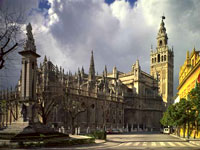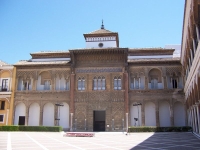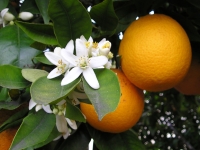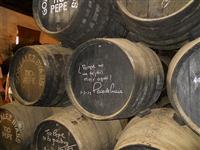Things to do in Seville
Wandering the narrow maze of Santa Cruz, Seville's most romantic neighbourhood, and admiring its balconies, flowers and stately mansions is one of the best tourist experiences in Spain. This adventureland can occupy visitors for days, but also offers rest through its courtyard cafes, bars and restaurants whenever its charming labyrinth of narrow streets becomes overwhelming. Seville is a city best explored on foot, and Santa Cruz is one of the districts where tourists can tap into the soul of this special Spanish destination.
Other famous Seville attractions include the enormous Seville Cathedral, which is one of the biggest Gothic churches in the world; the recently renovated Plaza de Espana (the stately square was constructed in 1929); and the Maria Luisa Park, which is one of the loveliest green lungs in Europe. However, the city's most famous attraction is the UNESCO-listed Alcazar of Seville, an ancient palace complex considered one of Spain's great treasures. Visitors to Seville should also be sure to take in a cultural performance as the city is alive with authentic Spanish music and Flamenco.
Additionally, there are several wonderful performing arts venues, including the Casa de la Memoria de Al-Andalus and La Casa del Flamenco Auditorio Alcantara. Good museums in Seville include the Museo Provincial de Bellas Artes de Sevilla (Museum of Fine Arts).

Seville Cathedral
Seville Cathedral is one of the largest churches in the world, and its massive Gothic edifice took more than a century to build. Its story began with group of religious fanatics wh…
Seville Cathedral
Seville Cathedral is one of the largest churches in the world, and its massive Gothic edifice took more than a century to build. Its story began with group of religious fanatics who, in 1401, decided to build a church so wonderful that 'those who come after us will take us for madmen'. The cathedral was built on the site of the Almohad Mosque, which was demolished to make way for its construction. Known as La Giralda, the mosque was originally built in 1198, of which only a minaret remains. Today it's open to tourists. Along with the Alcazar and the Archivo de Indias, the cathedral has been declared a UNESCO World Heritage Site and is undoubtedly one of the highlights of a visit to Seville.

Alcazar of Seville
Alcazar is Seville's top attraction and one of the most famous in Spain. The complex is a UNESCO World Heritage Site and an undisputed architectural masterpiece. The site of Sevill…
Alcazar of Seville
Alcazar is Seville's top attraction and one of the most famous in Spain. The complex is a UNESCO World Heritage Site and an undisputed architectural masterpiece. The site of Seville's Moorish palace has been occupied by the city's rulers since Roman times, and has been a favoured residence of Spanish kings since the Middle Ages. Established by the Moors as early as the 7th century, it was primarily built in the 1300s and has been added to and altered by successive occupants ever since. Of the early Christian additions, most notable is the colonnaded quadrangle of the Patio of the Maids. The palace is set in beautiful, extensive gardens where it is possible to picnic.

Santa Cruz
A former Jewish ghetto, Santa Cruz in Seville is an enchanting maze of alleys, gateways, and courtyards. Every street corner has a romantic legend attached to it, and windowsills a…
Santa Cruz
A former Jewish ghetto, Santa Cruz in Seville is an enchanting maze of alleys, gateways, and courtyards. Every street corner has a romantic legend attached to it, and windowsills are festooned with flowers and the fragrance of jasmine pervades the air. Santa Cruz is also bordered by the Alcazar, the Jardines de Murillo, and Santa Maria La Blanca, and can be reached via the Calle Rodrigo Caro. Some of the sights to look for are the Hospital de los Venerables, which contains Sevillian artworks; the beautiful mansions in the Calle Lope de Rueda; and the Convent de San Jose, which boasts relics of Saint Teresa of Avila; and the Iglesia de Santa Maria la Blanca, which features Murillo's 'Last Supper'.

Museo Provincial de Bellas Artes de Sevilla
This restored convent dates back to 1612 and houses one of Spain's most important and largest art collections. Hidden in a tiny plaza off Calle de Alfonso XII in Seville, the museu…
Museo Provincial de Bellas Artes de Sevilla
This restored convent dates back to 1612 and houses one of Spain's most important and largest art collections. Hidden in a tiny plaza off Calle de Alfonso XII in Seville, the museum was established in 1839, and contains art spanning from medieval times to the 20th century, with the pride of the collection being the range of paintings from the 17th century, which was Seville's Golden Age. Highlights include the religious paintings of Seville's own Esteban Murillo, but the collection also includes other Seville School artists such as the macabre works of Juan de Vales Leal and Francisco de Zurbaran. There are also two paintings by El Greco, a Greek artist whose emotional style thoroughly captured the passion of Counter-Reformation Spain.

Maria Luisa Park
Regarded as one of the loveliest parks in Europe, this half-mile area in southern Seville lies near the port and is planted with palms, orange trees, elms, and Mediterranean pines.…
Maria Luisa Park
Regarded as one of the loveliest parks in Europe, this half-mile area in southern Seville lies near the port and is planted with palms, orange trees, elms, and Mediterranean pines. Bright and beautiful flower beds vie for the eye with hidden bowers, ponds, pavilions, water features, and statues in this little paradise, which was designed in the 1920s and thus reflects a mix of Art Deco and Mudejar styling. The park was originally part of Seville's World Expo, which brought a burst of creative architecture and rejuvenation during the 1920s, and which included the redirection of the Guadalquivir River and the construction of some opulent buildings, such as the stylish Guatemala building off the Paseo de la Palmera.

Sherry Bodegas
Andalusia's chalky soil is ideal for the cultivation of the palomino grape, from which the world-famous sherry (jerez) of the region is made. The main sites of sherry production in…
Sherry Bodegas
Andalusia's chalky soil is ideal for the cultivation of the palomino grape, from which the world-famous sherry (jerez) of the region is made. The main sites of sherry production in Andalusia are Jerez de la Frontera and Montilla, and these charming towns are home to plenty of self-proclaimed sherry connoisseurs, who will debate the quality of the sweet amber-coloured blends with the seriousness usually reserved for appraising the finest French wines. An increasingly popular tourist activity for visitors to southern Spain is to tour the bodegas of the region, wineries with a history dating back to Roman times, which specialise in the fermentation of palomino grapes and the production of sherry.



